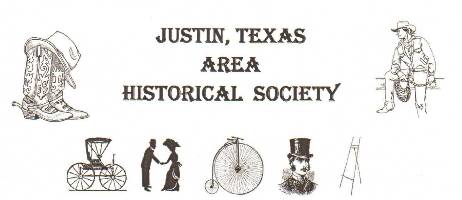Justin,
Texas - Since 1883
|
Welcome to the
Justin Texas Area Historical
Society
Nearby Town Histories webpage
|
Histories of
Nearby Towns and Communities
- Drop Community
- Drop is 4 miles Northwest of Justin
and 6 miles southwest of Ponder.
- The Denton Creek Settlement was
established in 1854 and it included what would become Drop. A Baptist
church was organized there in about 1880. After the coming of the Gulf,
Colorado and Santa Fe Railroad in 1887, Justin and
Ponder became attractive towns and settlers naturally
drifted to these railroad towns. On January 6, 1886 a post
office was established at Drop. It closed on September 10, 1904 and
Rural Route No. 1 was then established and on March 16, 1907, R. R. No.
2 was established, with both routes originating in Justin. One of
the early school teachers in Drop was Miss Kate Karnes of Justin. The
school in Drop has long ago been consolidated with the Justin School
District.
- <snip> My name is Chelsey Cox, and I live
in Drop, Texas. Seeing as Drop is no longer a ‘town’ per se, I did most
of my growing up in Justin.
I can remember the always unique cookouts the firehouse would have and
the Justin
Fun Days we used to have every year. The best thing
about Justin
is that everyone is family and every one knows everyone else. We can
sit down in Mom’s Café
and the waitress already knows what we want to drink, everyone knows
the names of our 5-6 police officers who are always glad to
help. Justin
is a small family-oriented town, a place like every other place used to
be. Throughout my childhood the whole community would swim at
"Drop Slab" in the summer and today on the last Monday night of every
month, everyone in Drop will cook up their favorite dish and meet at
the old schoolhouse for dinner. Everyone knows everyone else and are
willing enough to help whenever possible. I love living in Drop because
it's small, there are no strangers, and the traditions of over 100 yrs
are still practiced today. - Chelsey Cox, Drop, Texas, August 17, 2007
<snip> from a post on TexasEscapes.com
(Ed. Note: a great website - highly recommend you visit it) - photos below from www.dfwurbanwildlife.com
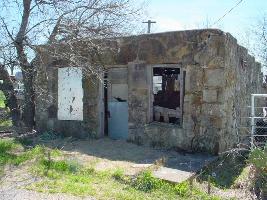
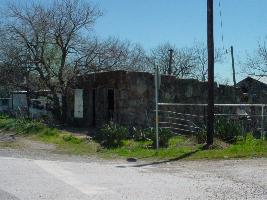
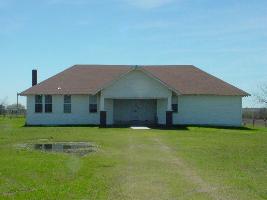
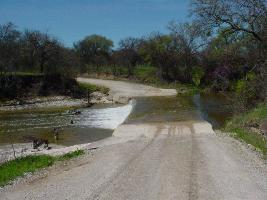
- Elizabethtown / Bugtown
- Elizabethtown is located 6
miles Southeast of Justin, TX near Texas Motor Speedway.
- The town site was
located in the southwest corner of Shamblen
Survey. Its
first resident were members of the Peters
Colony who
arrived about 1850. The settlement served as a supply station
in 1852 for cowboys driving their herds north to Kansas. By 1859
Elizabethtown had six saloons, a hotel, a post office, and a
school, which at
its height had 25 students. As the town grew it gained an
additional four general stores, another hotel, as well as a livery
stable, along with Baptist and Methodist churches,
and a Masonic lodge that operated from 1873 to 1876. Elizabethtown derived its
original name from the adjacent Elizabeth Creek. However the residents of nearby Justin referred to Elizabethtown as
'Bugtown'. Elizabethtown got this nickname from Justin's
citizens when one night at a preacher's camp
meeting so
many bugs swarmed to the
lights that it was
necessary to stop the preaching. The Texas and Pacific
Railway was built in 1881 and ran from Fort Worth through
Denton County. However it bypassed Elizabethtown by two miles.
Due to this lack of railway access, many residents moved two miles to
the east to the newly established town of Roanoke, Tx. They took with
them their businesses, churches and the Masonic lodge. The 1880 tax
roll is the last roll of Denton County in which Elizabethtown is
mentioned. The only remains of the first town in southwest Denton
County are in the form of the Elizabeth Cemetery, which is still in use
today. Elizabethtown Cemetery is located on the south side of Elizabeth
Creek on Elizabethtown Cemetery Road. The cemetery is south of Texas
Hwy 114 and east of Interstate 35, a service road on the east side of
I-35 and on the south side of TX 114, leads south across Elizabeth
Creek to Elizabethtown Cemetery Road. Turn left, east,on Elizabethtown
Cemetery Road, the cemetery is at the end of the road about 1/4 mile.
The grave of Deputy Sheriff Carl Edward Garrett of the Denton County
Texas Sheriff's Office is located in Elizabethtown Cemetery. Deputy
Sheriff Carl Garrett passed away at age 34 on
Tuesday, July 3, 1934, succumbing to a gunshot wound he
sustained the previous night in Justin, Tx when he and several other
peace officers raided a cafe on 4th street in Justin, Texas. Deputy Garrett was
struck in the throat when
one of the occupants of the cafe opened fire. The other deputies returned
fire, and killed the suspect. The Justin Police Dept. is working to
honor Deputy Garrett. Stay tuned for details as they are announced.
- Stony
(Stoney), Texas
- Stony is located via Farm Road 2622. It is 8 miles North
of Justin
and 10 miles West of Denton.
- The Old Chisholm Trail crosses Denton
Creek about a mile from Stony. Original settlers settled there in order
to have ample water for their cattle and themselves. Stony got
its name from the almost solid rock that the town is built upon.
Stony's post office opened in 1879, but by 1918 it was discontinued.
The first school was a one room building and was built in 1884. Stony
had a hotel, post office, and grocery store. A Methodist Church was
built in 1888 and a Baptist Church was built in 1889. The Church of
Christ was built in 1910. The town of Justin was the
shipping point for area farmers and naturally drew potential settlers
away from Stony. - photos below from www.dfwurbanwildlife.com
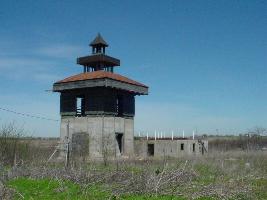
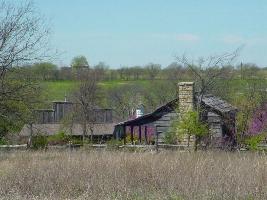
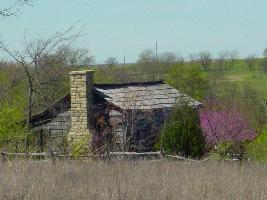
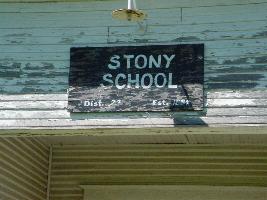
- Town of
Ponder, Texas
- Ponder is located 7 miles North of Justin on FM 156
- City of Krum,
Texas
- Krum is located 13 miles North of Justin on FM 156
- Town of Haslet, Texas
- Haslet is located 9 miles south of Justin on Farm Road
156 in extreme north central Tarrant County.
- The area was settled
around 1880, but it is likely that no distinct community formed until
1883, when the tracks of the Gulf, Colorado and Santa Fe Railway were
extended through the area. Charles L. Maloney (originally from Ireland)
was a resident of the Haslet community since 1882.
He died at 96 in 1938. Mr. Maloney came to the Blue Mound area
in 1882 with his brother-in-law, H.C. Hurley, of Fort Worth. They
bought a barren tract of land 15 miles north of Fort Worth, the present
site of Haslet. Mr. Maloney began raising short horn Durham cattle. He
had one of the first herds in the county. When the Santa Fe
Railroad representatives came to the Maloney ranch seeking right-of-way
for the railroad. Mr. Maloney told them to let the wheels of progress
roll across someone else's property. Later, after some consideration,
Mrs. Maloney decided it would be nice to be able to ride the train in
to Fort Worth. Mr. Maloney saddled up his horse and rode down to the
railroad. He told the workmen they could go through. One man asked what
he had said. "He has let us go through." Joel C. Harmmond, the railroad
contractor for the Gulf, Colorado & Santa Fe, was from Haslet,
Michigan. "We'll name this stop Has let--," he said. The settlers in
the area and the railroad works gave credit of the name to Mr. Maloney:
has let the railroad come through, the year 1886. The community was
named for the Michigan hometown of the railroad's contractor in
combination to the words spoken by Mr. Maloney apparently. A post
office was opened in Haslet in 1887. In 1896 the
community had a school with twenty-one students and one teacher. Ten
years later the Haslet school had twenty-five students. In January of 1897, Haslet suffered a train collision accident where an Engineer and a Brakeman as well as livestock were killed. Haslet's
population was sixty-seven in 1903 and fifty in 1915. During the 1920s
Haslet had three grocery stores as well as a hardware store, dry goods
store, and cotton gin. It reported a population of sixty-nine in the
mid-1930s. The availability of war-related employment in Fort Worth
probably contributed to the growth of Haslet's population to 175 by the
late 1940s.
- City of Aurora, Texas
- Aurora is located 16 miles West of Justin, Tx in Wise
County. Aurora is on State Highway 114 ten miles southeast of Decatur
in southeastern Wise County.
- The site is on a gentle rise and is
surrounded by mesquite and live oak trees. Settlement began there in
the late 1850s. Impressed by the beauty of the place, William O.
Stanfield suggested Aurora for the name of the community. For the first
twenty years the population grew rapidly, and the town became a trading
center for county farmers. A post office was opened in 1873, and the
town was incorporated on August 21, 1882. By the mid-1880s Aurora had
two schools, two cotton gins, two hotels, fifteen businesses, and a
population variously estimated at between 750 and 3,000. An outbreak of
spotted fever began during the latter part of 1888, and by 1889 fear of
the epidemic had caused a mass exodus from the town. Two years later,
when the Fort Worth and Denver City Railroad abandoned its plan to lay
tracks through Aurora, most of the few remaining inhabitants moved to
Rhome, two miles to the southeast, the new site of a railroad stop.
Ironically, as its decline continued, the town became the focus of the
state's attention. On April 18, 1897, S. E. Hayden, an Aurora cotton
buyer, wrote a story describing the crash of a mysterious airship just
outside of town. Hayden's fictional article was apparently an attempt
to bring attention to the community, but it caused a sensation because
stories were already current of unidentified flying objects near Fort
Worth. Hayden's tale, however, failed to revive Aurora. In 1901 postal
service was discontinued. The construction of State Highway 114 through
Aurora in 1939 probably saved the community from extinction. from TSHA
- The Aurora, Texas, UFO incident reportedly occurred
on April 17, 1897 when, according to locals, a UFO crashed on a farm
near Aurora, Texas. The incident (similar to the more famous Roswell
UFO incident 50 years later) is claimed to have resulted in a fatality
from the crash and the alleged alien body is said to have been buried in an
unmarked grave at the local Aurora cemetery. During the 1896–1897
time frame (some six or seven years before the Wright Brothers' first
flight), numerous sightings of a cigar-shaped mystery airship were
reported across the United States. One of these accounts appeared in
the April 19, 1897, edition of the Dallas Morning News. Written by
Aurora resident S.E. Haydon, the alleged UFO is said to have hit a
windmill on the property of a Judge J.S. Proctor two days earlier at
around 6am local (Central) time, resulting in its crash. The pilot (who
was reported to be "not of this world", and a "Martian" according to a
reported Army officer from nearby Fort Worth) did not survive the
crash, and was buried "with Christian rites" at the nearby Aurora
Cemetery. (The cemetery contains a Texas Historical Commission marker mentioning the incident.) Reportedly,
wreckage from the crash site was dumped into a nearby well located
under the damaged windmill, while some ended up with the alien in the
grave. Adding to the mystery was the story of Mr. Brawley Oates, who
purchased Judge Proctor's property around 1945. Oates cleaned out the
debris from the well in order to use it as a water source, but later
developed an extremely severe case of arthritis, which he claimed to be
the result of contaminated water from the wreckage dumped into the
well. As a result, Oates sealed up the well with a concrete slab and
placed an outbuilding atop the slab. (According to writing on the slab,
this was done in 1957.) from wikipedia

 |
|
 |
- all original content is copyright 2015 -
- permission granted to print and distribute as long as it is for free, and credit is given -
- Brian F. - Author/Webmaster -
